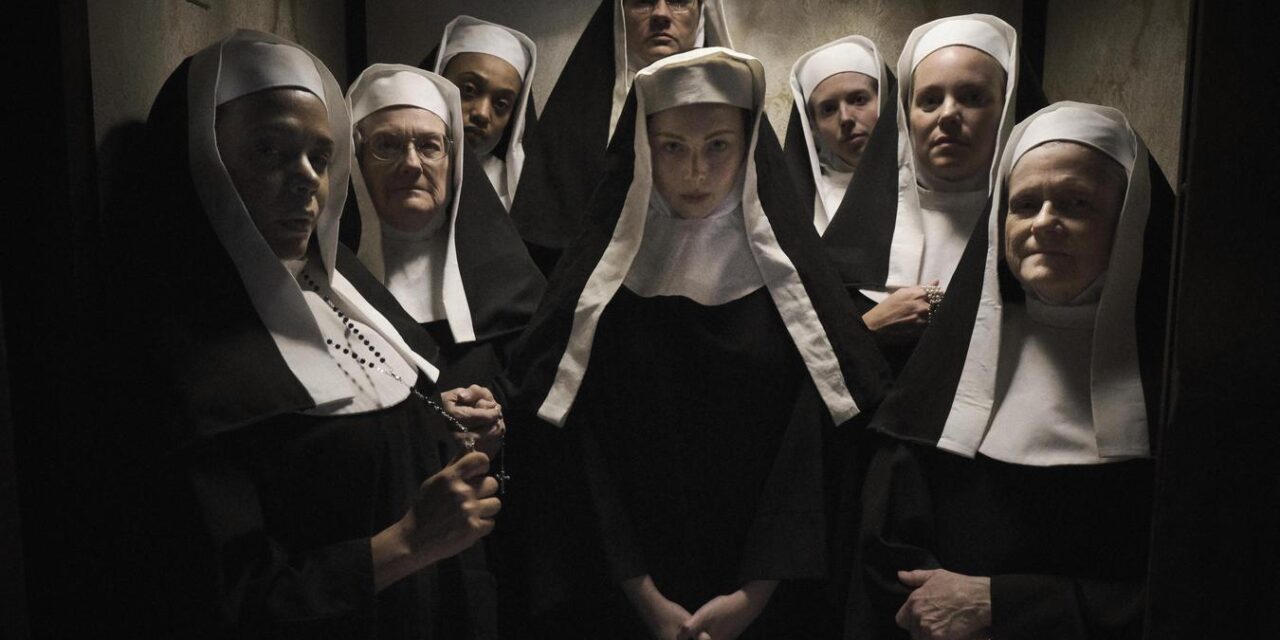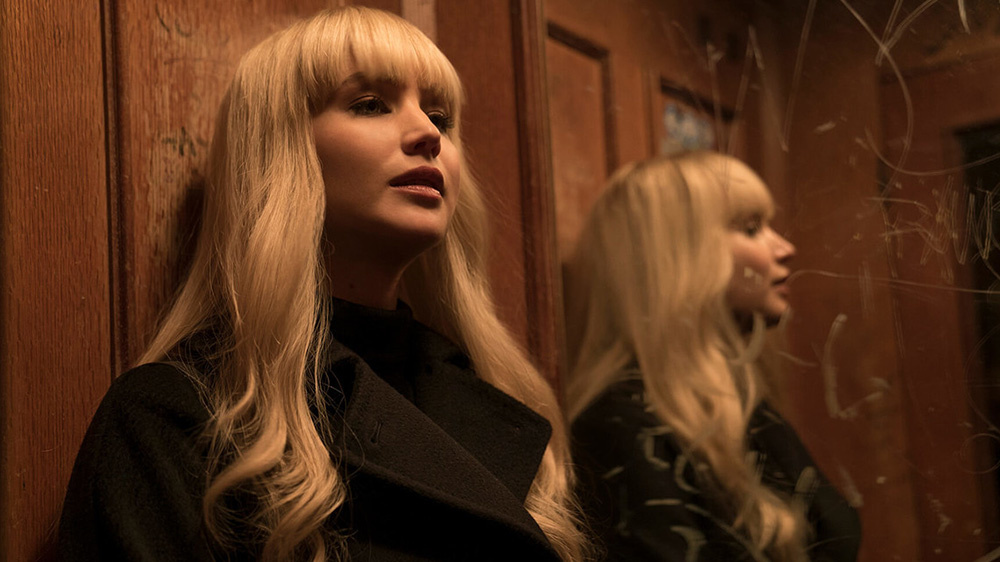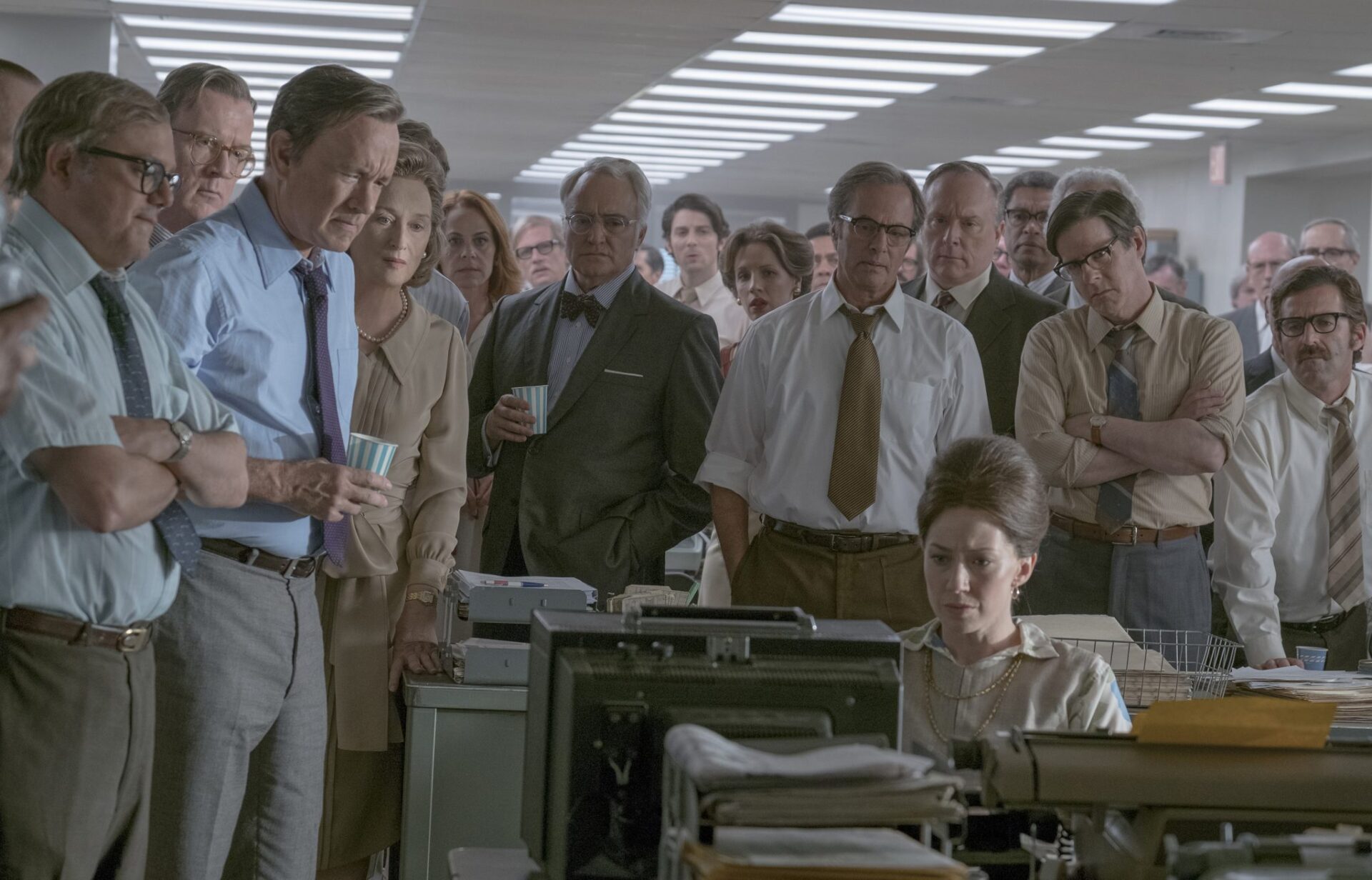At first look, director-writer Mickey Reece’s Agnes can be seen as a satire take on the possession sub-genre of horror. All the fixings are there; the sudden movement of objects, changing the inflection of voices, and violent attacks from a devious spirit. It certainly sets the table as if it’s going that route. The film opens as a nun named Agnes (Hayley McFarland) suddenly barrages her fellow sisters with expletives, insults, and rocking the dinner table. Thus, we have a quintessential case of a demon inhabiting a vessel, but writers Reece and John Selvidge dissect why that is so captivating to the masses.
A council calls upon a twosome that couldn’t be more different from one another. Father Donaghue (Ben Hall) is an expert at dealing with exorcisms but is jaded from the long years of the priesthood. His partner, Benjamin (Jake Horowitz), is due to take vows soon and is unflappable when following his faith. Donaghue is a bit of a pariah when it pertains to those around him – having been accused of sexual molestation; this mission is due to be his last before the church sends him away. As Donaghue describes, the church uses exorcism as a tool, but never identifies with the practice publicity. Much of the early interactions that Donaghue and Benjamin have shown how loose he’s become in sticking with the ideology that comes with being a priest—putting his knowledge up for debate, equating exorcism as a placebo effect for those who feel lost.
When they both arrive at the convent, Mother Superior (Mary Buss) runs a tight ship and is skeptical of two men (Benjamin, particularly) staying overnight. However, Agnes needs help, so she reluctantly obliges. From that point, Agnes ventures down the road that many movies before it has gone before. Alas, it throws a curveball – Donaghue is unsuccessful in driving the spirit out. In a last-ditch effort, he calls upon another “expert,” Father Black (Chris Browning), who had been excommunicated from the church years prior. In a TV interview serving as his introduction, it’s explained he could not unbind his sister from a demon. So, his family has lived with it for years. What in the world is he going to do for Agnes? Reece elects to balance how absurd religion for profit can be and how mixing it with pure devotion can be like oil and water. There isn’t a lot offered in terms of spookiness – it’s not the goal. More so, everything serves as a bridge to touch on the friendship of Agnes and her friend, Mary (Molly Quinn).
The second half of the film develops more of a character study. The resolution appears to save Agnes; however, Mary becomes the main character. Agnes dives into life after leaving the nunnery, and the tone becomes more serious. Because of her perceived nativity, the world is very unkind to her. Mary works for a sleazy supermarket owner named Curly (Chris Sullivan), who constantly propositions her inappropriately, her landlord increases rent on a whim, and she’s all alone. The audience has to witness Mary wrestle with the point that drove her to become a nun in the first place – she had a son who died unexpectedly. Mary describes praying to God to answer why and him never answering her back – creating an emptiness inside her.
In terms of solace, she briefly finds it within a somewhat successful comedian named Paul (Sean Gunn). Agnes confesses to Mary of loving and losing him – however, she was his student at the time – so that could have been on shaky ground. The sudden tonal shift will catch you by surprise -maybe be off-putting to some. Sometimes the comedic critique and philosophical expose don’t line up. That being said, it takes this story to another mode of thinking. Mary could quickly go back to the convent. She is even proposed that as a solution when life on the outside gets tough. In saying that, the hurt runs deep and constantly running from it only exacerbates the heat of loss.
Agnes could have given us the regular bustle of exorcism rite of passage. Instead, it laughs at it, twists some character archetypes around, and comments on how hard it is to maintain unshakable morality within tragedy.
Photo Credit: Magnolia Pictures













